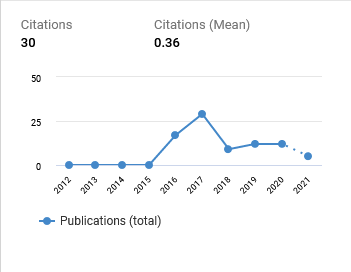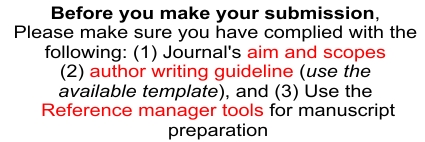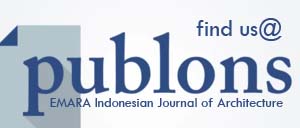The Effect of Urban Spatial Configuration on Sustainable Tourism Development in Jabon District, Sidoarjo
DOI:
https://doi.org/10.29080/eija.v7i2.1298Keywords:
spatial configuration, sustainable tourism, space syntax, spatial spaceAbstract
Sidoarjo Spatial Planning's data indicates that Jabon area is planned to be a DEM tourist area and secondary mixed-used. Some tourism activities have started to exist but are only concentrated in the Tlocor area, while other areas in the area are still very minimal in facilities. Is it true then that the configuration of urban space in Jabon District can accommodate the city's development – which is now leading to tourism? This research is qualitative research with a phenomenological approach. The chosen space syntax analysis technique is used as a heuristic tool to discuss fundamental concepts. The study results indicate a relationship between the configuration of urban space and the concept of sustainable tourism development. Configuration can be seen in terms of accessibility and economic improvement that can be done by knowing the parts that can be mobility options and are connected to other urban spaces. Accessibility in the area can be developed by evaluating the existing road network so that connectivity can be better and human mobility to and from tourist areas is higher.
Downloads
References
Alitajer, S., & Molavi Nojoumi, G. (2016). Privacy at home: Analysis of behavioral patterns in the spatial configuration of traditional and modern houses in the city of Hamedan based on the notion of space syntax. Frontiers of Architectural Research, 5(3), 341–352. https://doi.org/10.1016/j.foar.2016.02.003
Bindajam, A. A., & Mallick, J. (2020). Impact of the spatial configuration of streets networks on urban growth: A case study of Abha City, Saudi Arabia. Sustainability (Switzerland), 12(5), 1–14. https://doi.org/10.3390/su12051856
Groat, L. N., & Wang, D. (2013). Architectural research methods. John Wiley & Sons.
Hagbert, P., Larsen, H. G., Thörn, H., & Wasshede, C. (2019). Contemporary co-housing in Europe: Towards sustainable cities? In Contemporary Co-housing in Europe: Towards Sustainable Cities? https://doi.org/10.4324/9780429450174
Hillier, B. (2007). Space is the machine: a configurational theory of architecture. Space Syntax.
Hillier, B., & Hanson, J. (1989). The social logic of space. Cambridge university press.
Niedziółka, I. (2020). Sustainable Tourism Development. Regional Formation and Development Studies, 3(3), 157–166.
Nurhalimah, D., & Astuti, D. W. (2020). Analisis Hubungan Konfigurasi Ruang dengan Penyebaran Pengunjung Pasar Klewer Menggunakan Space Syntax. Sinektika: Jurnal Arsitektur, 17(1), 13–20. https://doi.org/10.23917/sinektika.v17i1.10833
Penn, A. (2003). Space Syntax And Spatial Cognition: Or Why the Axial Line? Sage Journals, 35(1). https://doi.org/https://doi.org/10.1177/0013916502238864
Ratodi, M., & Syariah, A. (2019). Perubahan Spasial Wilayah Permukiman Muslim Sekumpul Terkait Aktivitas Dakwah KH Muhammad Zaini Abdul Ghani Spatial changes in the Sekumpul ’ s Moslem Settlement Area Related to the KH Muhammad Zaini Abdul Ghani ’ s Da ’ wah Activities. 5(December).
Sugiyono, P. (2011). Metodologi penelitian kuantitatif kualitatif dan R&D. Alpabeta.
Sushanti, I. R., Imansyah, N. H., Susanti, F., Mahendra, Y. I., & Ridha, R. (2018). Kajian Perubahan Fisik Spasial Kawasan Urban Fringe Di Kecamatan Ampenan Kota Mataram. Jurnal Planoearth, 3(2), 44. https://doi.org/10.31764/jpe.v3i2.609

Downloads
Additional Files
Published
How to Cite
Issue
Section
Categories
License
Copyright (c) 2022 Fairuz Mutia, Azkia Avenzoar, Fatimatuz Zahroh

This work is licensed under a Creative Commons Attribution-ShareAlike 4.0 International License.
- Authors retain copyright and grant the journal right of first publication with the work simultaneously licensed under a Creative Commons Attribution ShareAlike License that allows others to share the work with an acknowledgment of the work's authorship and initial publication in this journal.
- Authors are able to enter into separate, additional contractual arrangements for the non-exclusive distribution of the journal's published version of the work (e.g., post it to an institutional repository or publish it in a book), with an acknowledgment of its initial publication in this journal.
- Authors are permitted and encouraged to post their work online (e.g., in institutional repositories, pre-print sites, or on their website) prior to and during the submission process, as it can lead to productive exchanges, as well as earlier and greater dissemination of published work.
































